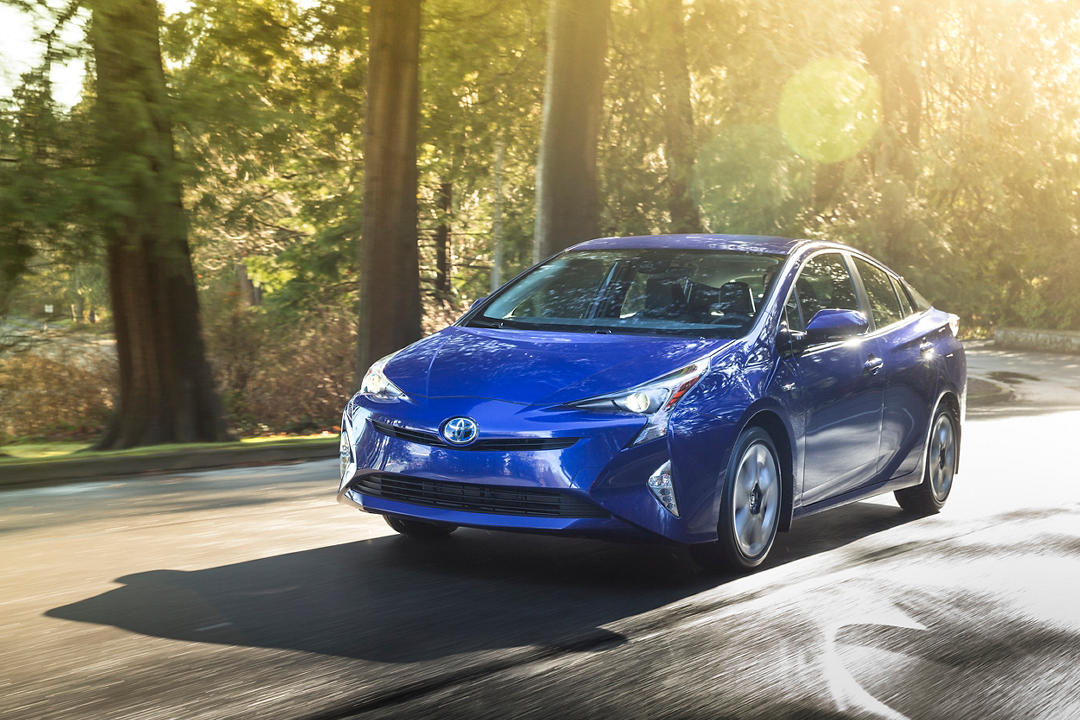LANGUAGES

TORONTO, ONTARIO, April 20, 2017 – This Earth Day – April 22 – Toyota Canada Inc. (TCI) would like you to take a moment to think about the environmental and financial impact of what you drive, how you drive it and how you maintain it.
Next time you grab your keys, keep these top 10 driving and maintenance tips in mind and you’ll be reducing your carbon footprint and saving up for that summer road trip in no time:
- Be light on your foot – These five driving techniques will help you maximize your vehicle’s fuel efficiency: (a) accelerate gently, (b) maintain a steady speed, (c) anticipate traffic, (d) avoid high speed and, (e) decelerate carefully;
- Get an oil change – Change your oil every 16,000 kilometres or 12 months, using synthetic oil, and use Toyota Engine Oil System Cleaner every 60,000 kilometres;
- Breathe easy – Have your engine’s air filter inspected every 8,000 kilometres. A dirty filter constricts the engine’s ability to breathe, hindering its efficiency;
- What’s stopping you? – Have your brake system inspected every 8,000 kilometres, and change your brake fluid every 48,000 kilometres;
- Say goodbye to winter and switch out those winter tires – Proper seasonal tires will provide optimal rolling resistance as well as peak stopping performance;
- Size matters – Altering the overall tire height of a vehicle will change its efficiency and performance. Check the manufacturer’s recommended tire size for your vehicle;
- Gauge your tire pressure - The sticker on the inside of your vehicle door jam - and NOT the pressure indicated on the tire itself - indicates the optimal tire pressure for your vehicle based on factors such as size and weight;
- Nitrogen vs. Oxygen – We’re not all good at chemistry, but here’s why you should pump your tires with nitrogen: Nitrogen maintains temperature better, reduces pressure fluctuations and, should there be a leak, it will occur more slowly with nitrogen (because nitrogen particles are larger than oxygen particles!);
- Reduce drag and weight – Remove non-essential items, roof racks, and cargo boxes whenever possible to optimize the aerodynamics and the weight inside your vehicle; and,
- Choose a hybrid as your next vehicle! There are 12 different Toyota and Lexus hybrid vehicles available to meet the versatile needs of Canadians. Just recently, Toyota received dual recognition from the Automotive Journalists Association Canada (AJAC) for two of its hybrid models – the Prius and the RAV4 hybrid– as the Canadian Green Car of the Year and the Canadian Green Utility Vehicle of the Year. Having already sold more than 10 million hybrids globally, Toyota aims to reduce greenhouse gas emissions by improving the fuel efficiency of its entire lineup.
These simple tips should help you keep the environment in mind and save on gas: a winning formula.
About Toyota Canada Inc.
Toyota Canada Inc. (TCI) is the exclusive Canadian distributor of Toyota and Lexus vehicles. Toyota has sold over 5 million vehicles in Canada through a national network of 287 Toyota and Lexus dealerships. Toyota is dedicated to bringing safety, quality, dependability and reliability in the vehicles Canadians drive and the service they receive. TCI’s head office is located in Toronto, with regional offices in Vancouver, Calgary, Montreal and Halifax and parts distribution centres in Toronto and Vancouver. Toyota operates two manufacturing facilities in Canada. Having produced more than six million vehicles, popular Canadian models built at these facilities include Toyota RAV4, Toyota Corolla, Lexus RX 350 and RX 450h hybrid.
Every effort has been made to ensure the product specifications, equipment, and content on this site are accurate based on information available at time of publishing. In some cases, certain changes in standard equipment or options may occur, which may not be reflected online. Toyota Canada reserves the rights to make these changes without notice or obligation.